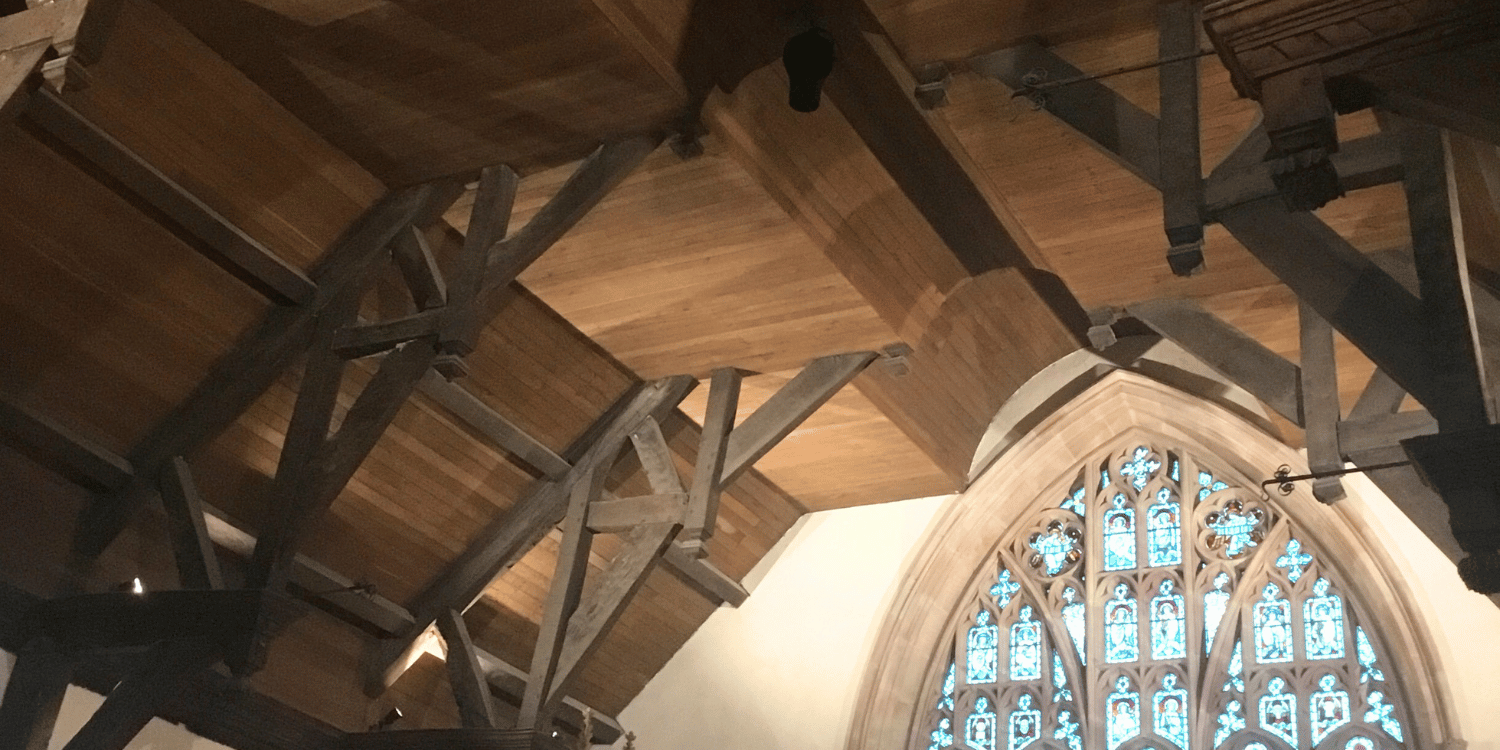
Last week marked Big Energy Savings Week. We took the opportunity to catch up with some of the energy-saving initiatives in two of our churches, St Barnabas Church, Brampton Bryan, and St Peter's Church, Lugwardine, where strategic measures have led to significant energy savings.
St Barnabas Church in Brampton Bryan took a proactive approach to energy efficiency as part of a project to repair the church roof the local team decided to install insulation and two destratification fans. Destratification fans work by continuously circulating warm air from the ceiling to the floor, to create a comfortable environment for your congregation. These fans help to balance the air temperature, so you don't have to overheat or over cool the church to maintain comfort. Circulating air also helps maintain the fabric of the church.
Installing insulation and fans has transformed how the church now manages to heat the building, creating a thermal barrier, which helps conserve the heat. The two destratification fans were strategically placed to circulate warm air, preventing heat from accumulating at the ceiling.
As churchwarden Michael Dugdale explains, “Before all the changes, we would put the heating on in the church at 3 am in the morning, but the church always felt cold, and temperatures rarely reached double digits. These days we’re getting to the heady heights of 12-15 degrees, and the church feels considerably warmer, helping us to offer a genuine ‘warm welcome’ each week.
As to the big energy savings, we’re not paying expensive bills for a cold church."
The journey towards Carbon Net Zero started at St Peter's Church, Lugwardine when the old Oil Boiler was decommissioned.
The church embraced modern technology by installing electric under pew heating, helping visitors toast their feet during services, and reducing an energy bill that kept skyrocketing each year.
These more efficient and eco-friendly alternatives for heating the church contribute to Carbon Net Zero efforts across all parishes in Hereford Diocese, aligning it with the Church of England's ambitious goal of achieving carbon net zero by 2030.
These two local Church stories illustrate the path to sustainable and energy-efficient practices within our diocese and bring comfort and warmth to congregations. Stephen Challenger, DAC Secretary and diocesan property team leader, concludes: “We hope these two examples will inspire other churches to embark on their journey towards energy savings and a greener future. Our team is always happy to help and advise churches wishing to explore their options.”